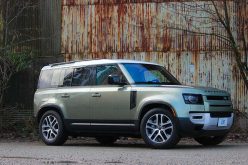Road Test: 2019 Mitsubishi Outlander PHEV

Story by Jordan Allan, photos courtesy of Mitsubishi
Specifications:
Price: $43,498
Engine: 2.0L DOHC 16-valve I4 + twin electric motors
Trans: 1-speed hybrid electric system
Power: 117 hp@ 4,500 rpm + 80 hp electric
Torque: 137 lb-ft @ 4,500 rpm + 101 lb-ft (front) and 144 (rear) lb-ft electric
Curb Weight: 4,178 lbs./ 1,895 kg
Fuel Consumption: (L/100km – City/Hwy) 3.0/3.4

Segment Competitors: Kia Niro PHEV, BMW X5 xDrive 40e, Volvo XC90 T8, Chysler Pacifica, Porsche Cayenne E-Hybrid, Subaru Crosstrek PHEV
The Skinny: If I asked you what the current best-selling PHEV (plug-in hybrid electric vehicle) in Canada is, I doubt many would start with Mitsubishi’s Outlander PHEV, but that is the correct answer. In fact, not only is it the best-selling in Canada, it is also the best-selling in the entire world which may spur on the question of ‘why?’.
Hybrids and electrics are clearly the way the automotive world is going and even with all the incredible ranges and efficiency numbers manufacturers are achieving, the one thing they haven’t seem to master is offering vehicles at prices that would be considered affordable. Sure, they are getting better in this respect but you would be hard pressed to find something with adequate room for both passengers and cargo for anything less than $45,000. This is where the Outlander PHEV comes in.
A starting rate of $43,498 of course doesn’t sound all that cheap, however when you compare the Outlander PHEV with many of its similarly priced competitors, it pretty much blows every one of them out of the water in terms of sheer size. The Outlander in general is a fairly large mid-size crossover SUV and one of the first such vehicles to offer a drivetrain that can be powered purely by electricity, albeit for a fairly short range.

For example, the vehicle allows you to use regenerative braking to charge the electric motor while driving on the gasoline motor which takes less time than you’d think and allows you to switch immediately back to full EV mode at the push of a button. Additionally, the Outlander PHEV is able to act as any normal hybrid would which helps it achieve its very good average of 3.2L/100km.
Combine all of this technology with the spacious, good-looking and easy-to-drive package that it comes in and you’ve got a vehicle that is clearly peaking interest around the world.
Pros: The fuel gauge hardly moved during my entire week of testing which should be a pro for anybody.
Cons: Although simple and easy to use, the interior design of the climate and infotainment controls feels a little old and dated.
The Verdict: The Outlander PHEV performs like any other mid-size SUV with the added bonus of achieving efficiency that can simply not be matched by nearly any of its closest competitors. If you are looking to move to something more electrified than what you are driving now, the Mitsubishi Outlander PHEV is definitely worth some strong consideration.
















